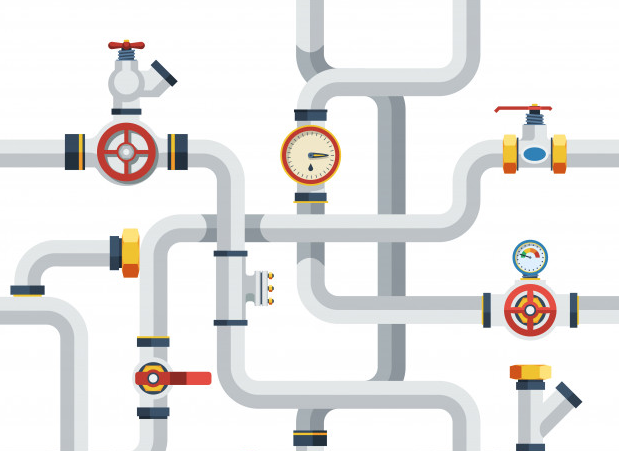
Putting together digital advertising campaigns across search, social, display, and video is getting easier every year. Platforms like Google, YouTube, Facebook, and LinkedIn are continuously upgrading to automate the process as mush as possible. The easier they make it, the more businesses will use it, and the more businesses will be rewarded.
Makes sense, right? Well, not exactly.
It makes sense for the ad platforms because it helps them make more money, but businesses are likely to flush extra marketing dollars down the drain. The main reason is because many businesses don't have the proper digital plumbing in place before they turn on the advertising taps.
Think of digital plumbing as all the elements that connect to keep things flowing properly, prevent leaks, and capture results. This means making sure your ad platform is connected to your website, the website is optimized to funnel the visitors, and your visitor's actions are captured in analytics. Let's discuss each of these in more detail.
Connecting ad platforms to your website
Most online ad platforms have a pixel, cookie or some tracking element that you can install on your website so you can attribute visitors to the particular platform. Installing or linking this element may require some web programming help, but it is a critical necessity for tracking advertising attribution.
Beyond attribution, these tracking elements can also be used to re-target future ads to people who visited your website but may not have converted. You can set rules for sending future ads to people who visited a certain page, spent a certain amount of time on the site, or a combination of things.
Another thing to do is creating unique destination urls for each different ad platform and then isolating visitors who come from these in analytics using acquisition filters (more on using analytics later). Some platforms allow you to append tracking parameters to ads, but a simple tool to aid this is Google's Campaign URL Builder.
Optimizing a website to funnel ad visitors into action
Unless your ad campaign is purely for branding purposes, you should not send people to your homepage. Choose a product/service page or build a specific landing page for your offer. The destination page should have a clear call-to-action or lead capture form.
Expecting people to convert into leads or customers right away may not be feasible, so also consider offering a take-away (coupon, newsletter, white paper, demo, trial, etc). Visitors who take action on these can then be re-targeted with future ads or be asked to provide an email address for future follow-up. Regardless, these visitor actions should always be captured within your website analytics.
Capturing visitor behaviours from ads in analytics
The basic reports provided in most web analytics platforms only scratch the surface of what tracking is possible. Google Analytics, specifically, allows for the tracking of website Events and Goals that can be attributed back to ad platforms. Setting up Events and Goals will require some technical knowledge, but it is a worthwhile endeavour so you can analyze what ads led to what actions on the website.
Also within Google Analytics is the Acqusition report that can be configured to easily identify the different online sources of traffic. Knowing what source of traffic leads to the most visitors or best quality visitors allows you to fine-tune where you should be placing your digital ad dollars. Ad platforms that deliver the most visitors may not be the best quality visitors, and you'll only know this by using Acquisition reports in conjunction with Goals.
So, there you have it. Avoid the temptation of running online ads just because it's easy to do so. Make sure you have the proper digital plumbing in place to ensure things flow smoothly and prevent flushing extra money down the drain. Thanks for reading.
Header image of pipes courtesy of macrovector - www.freepik.com



